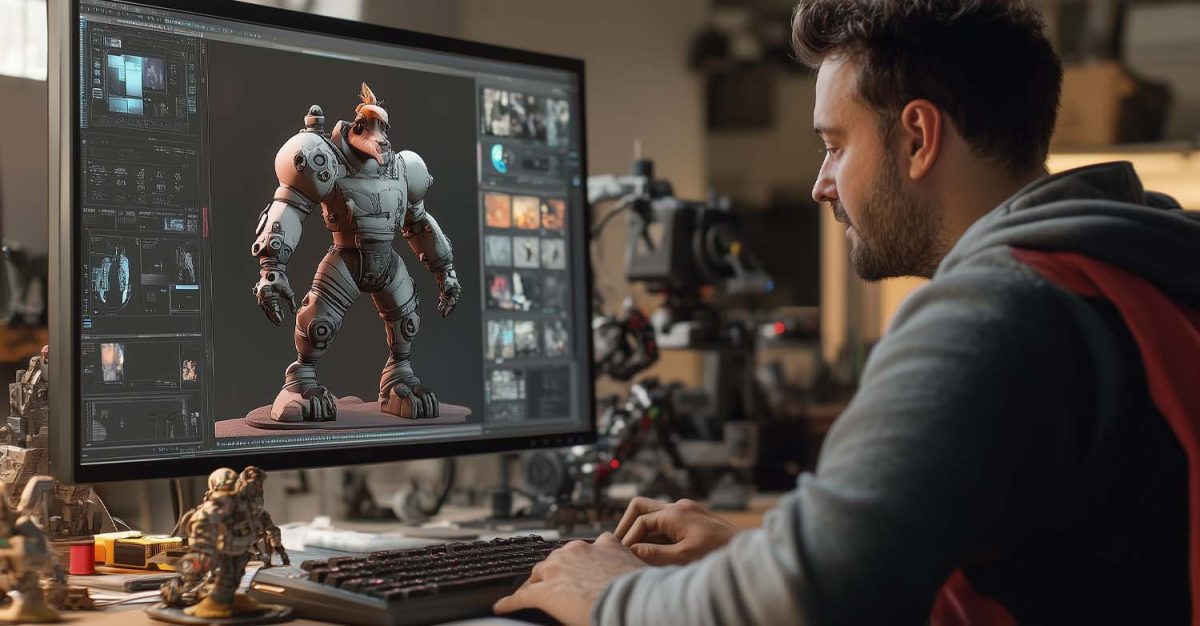Starting out in 3D animation? You’ve probably seen names like Blender and Maya pop up in every tutorial or animation blog (like here at Bloop Animation). Choosing the right 3D animation program as a beginner can feel overwhelming, but it doesn’t have to be.
This guide breaks down the most popular 3D animation software for beginners, including the pros, cons, and who each one is best for.
1. Blender – The Best Free 3D Animation Software for Beginners
Cost: Free
Skill Level: Beginner to Advanced
Blender is hands-down the best free 3D animation software on the market. It’s completely open-source and includes features for 3D modeling, animation, rendering, VFX, and even video editing.
Why beginners love it:
- Free and open-source
- Massive online community (tons of free tutorials)
- Used by indie studios and professionals alike
Why it might not be for everyone:
- The UI can feel overwhelming at first
- Not the default tool used in major animation studios (yet)
Best for: Students, hobbyists, indie animators, and anyone on a budget
Want to learn Blender from scratch? Bloop Animation offers an excellent beginner Blender course to help you jump in confidently.
2. Maya – The Industry Standard for 3D Animation
Cost: Subscription-based (Free for students)
Skill Level: Intermediate to Professional
Autodesk Maya is the go-to software for professional 3D animation studios like Pixar and DreamWorks. It’s widely used for character animation, rigging, and complex scene management.
Why it’s worth learning:
- Industry standard in film and game production
- Robust tools for rigging, dynamics, and rendering
- Student version available for free
Why it might not be beginner-friendly:
- Steeper learning curve
- Pricey without student access
Best for: Aspiring professionals and animation students who want to work in studios
Bloop Animation has a Maya course that walks you through the essentials in an easy-to-follow format.
3. Cinema 4D – The Easiest 3D Software for Motion Graphics
Cost: Subscription-based
Skill Level: Beginner to Intermediate
Cinema 4D is a favorite among motion designers and visual effects artists. It’s user-friendly and integrates seamlessly with Adobe After Effects.
Highlights:
- Intuitive interface for beginners
- Ideal for motion graphics and design-heavy animations
- Fast rendering and real-time preview
Limitations:
- Less commonly used for character animation or game assets
- Expensive without a student license
Best for: Graphic designers, motion graphics artists, and video creators
4. Bonus: TVPaint – A 2D Animation Tool Worth Mentioning
Cost: Paid license
Skill Level: Intermediate
While not 3D, TVPaint is a professional-grade 2D animation tool. It’s been used to create full animated films, including several by Bloop Animation.
Why mention it? If you’re unsure about jumping into 3D right away, 2D animation is a great place to start learning the 12 principles of animation, which are transferable to any medium.
Best for: Artists with a passion for hand-drawn, frame-by-frame animation
We have a TVPaint course for you at Bloop Animation, to get you started on your 2D animation journey.
Our Final Thoughts
At Bloop Animation, we believe in learning by doing. Don’t waste weeks comparing tools, start animating today. All the theory in the world won’t help you more than finishing a short scene on your own.
Whether you choose Blender, Maya, or any other tool, the fundamentals of animation are what truly matter. Pick a software, start a project, and watch your skills grow.

